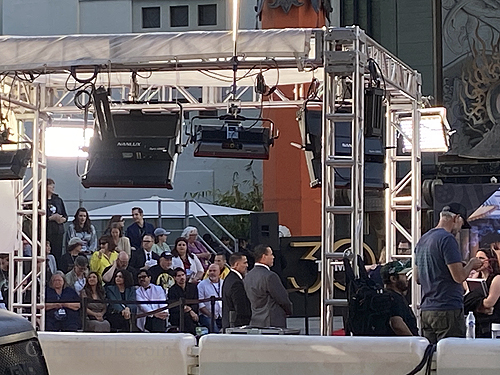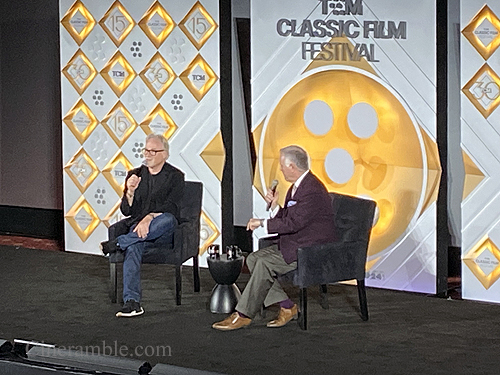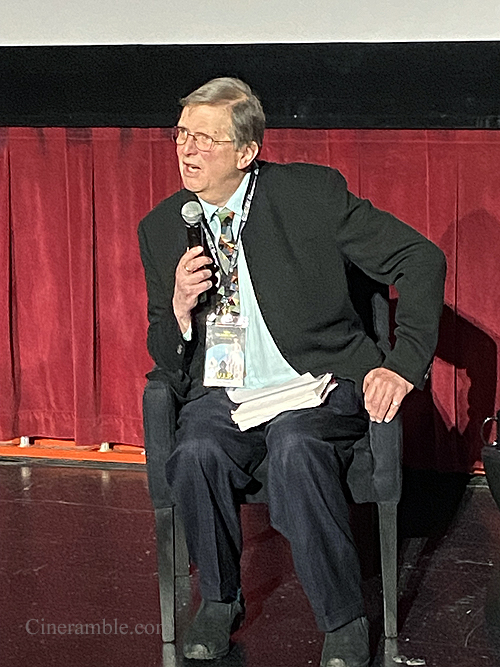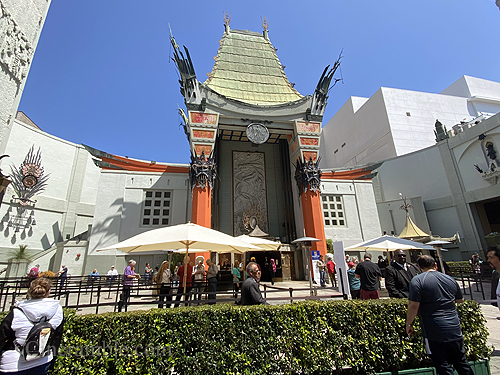
The stunt man is often looked at as the most thankless job in the movie business. To perform a stunt on film involves a person literally putting their health and safety on the line to make an action beat feel authentic, and yet we don’t know the names of those who perform the stunt and we hardly ever see their faces. And yet their work may end up being the most impressive thing that we see in any given movie. Some of the greatest moments ever put on film are due to the work that these men and women do, and they are completely invisible. At the same time, the stunt teams know that their job is to mainly make the movie stars look better. The reason stunt teams exist at all is because movie studios will not risk endangering their actors, unless the actors do want to get more involved, which then will add more to the budget due to the insurance costs. But there is little doubt that stunt work is an invaluable part of the making of a movie and more and more today we are seeing audiences becoming more appreciative of the work that these invisible men and women do. After many years of tiresome CGI enhanced mayhem being overused by the industry, there is starting to become a growing appreciation for actual physical stunt work once again. And this is due to the fact that people who have come up through the stunt departments in movies are now making their own movies and revolutionizing the action movie genre once again. In the past couple decades, we’ve seen people like Michael Bay and Gore Verbinski become the leading action filmmakers, but these guys rose up into the director’s chair through visual effects and camera departments, making their action movies more visually oriented. Today, the most celebrated action movies are the ones directed by former stunt performers like David Leitch and Chad Stahelski, who have brought action movies back to it’s grounded roots. And as a result, the last few years have been something of a golden age for stunts in cinema.
Stunt work is a profession as old as the movies themselves, and even further back than that. Stage craft as far back as the days of Shakespeare required performers who were skilled in combat and capable of feigning a realistic fight in front of an audience for the purpose of the drama. That profession continued on and evolved as theater performances became grander spectacles over the years, incorporating elements that we still see today as part of the movie making business like wire work and acrobatics. Once cinema arrived on the scene, performers who had trained their skills on the stage were necessary for making the illusion of life on screen feel authentic. The first verified stunts captured on film were the of course in what is recognized as the first action movie, The Great Train Robbery (1903). As primitive as the art of film still was in the dawn of the 20th century, The Great Train Robbery still had it’s actors acting out fights on real moving locomotives, which even today is something that requires a lot of risk taking. That groundbreaking work of cinema paved the way for many more spectacles to come. The silent era of film is one full of some death defying stunt work that honestly could never happen the same way today due to the fact that much of it was un-regulated at the time. In those days, the actors themselves were required to do the stunts themselves because that was just the nature of filmmaking at the time, and some of their stunts involved falling from very high places or having something very heavy fall on their heads. As movie stars emerged, it was recognized that these actors perhaps needed someone skilled to take their place for the more dangerous stunts. And out of that, the stunt profession was born in Hollywood. Movies from the great silent movie auteurs like D.W. Griffith and Cecil B. DeMille would certainly not have made as much of an impact had there not been a dedicated stunt team there to make those battle scenes feel as brutal as they possibly could be.
But the silent era also showed us a different way that stunts could be performed in film, and that was in the service of comedy. If anything, the stunts of the silent era that still astound audiences to this day are the ones found in comedic silent films, particularly those of Harold Lloyd and Buster Keaton. Charlie Chaplain had the occasional impressively choreographed stunt in his movies, but his comedic genius was more present in the small bits that he performed to perfection. Lloyd and Keaton on the other hand went very big with their comedic stunts, often to the point where you feel they were tempting death in order to get the perfect shot. Harold Lloyd’s most celebrated film, Safety Last (1923) involved the comedian hanging off of the side of a skyscraper, with the most famous image of the film being his clinging onto life by the hands of a clock face. That moment was made possible before there was ever such a thing as rear projection or green screen, so to get the shot just right, Lloyd and his crew built a façade wall on the roof of an actual skyscraper. Though he really wasn’t hanging right off the edge of a building, he was still very high up to get the real street scene below into the shot, so the stunt was still a huge risk to take. In Buster Keaton’s movies, the gags were so elaborate and dangerous that there are several instances where if his timing was off by mere seconds, he would truly be dead. The famous wall collapse in Steamboat Bill Jr. (1928) is a great example of this, as Buster had to hit his mark perfectly or else he wouldn’t have been in the safe zone as the needle point poking through the window hole in the side of a whole building coming crashing down. And there’s of course The General (1926) where Keaton is working with full size moving trains as his props, which could’ve spelled disaster if one mistimed stunt led to a derailment. But as much as these comedians nearly killed themselves for the sake of comedy, the hard work still paid off, and you can see the inspiration they had on comedies thereafter, with stunt work playing crucially into the comedy of films like It’s a Mad, Mad, Mad, Mad World (1963), The Naked Gun (1988) and so many more.
As the movies got bigger in the mid century, so did the stunts required to make the movie scenes feel more epic. Two genres in particular began to advance the art of stunt work in this period; Westerns and Biblical epics. For a lot of these movies, the ability to ride a horse (and more specifically to fall off one) became an essential skill for stunt performers. This even led to an invention specifically made to help stunt actors, which was the L stirrup, which allowed horse riders to fall off a horse without getting their foot caught in the stirrup. A lot of other inventions were created to also help enhance the stunt work performed on film, including air bags for falls from high places, air rams that were used to catapult performers into the air, and when censorship standards for on screen violence began to lessen, the introduction of squibs made gun shots all the more realistic on screen. With the stunts becoming more complicated in these mid-century movies, the duty of a stunt coordinator became all the more important. The stunt coordinator in many ways is a director of a film within a film, as their responsibility is to make sure the stunts are performed perfectly in conjunction with everything else on screen. One of the most valuable stunt coordinators of this era was a man named Yakima Canutt. Yakima was one of the most skilled horsemen in Hollywood in it’s early days, famous for having the first horse transfer ever put on film, which is to jump from one galloping horse to another. Naturally, he was the go to guy for staging some of the most complex horse riding stunts in the movies, mostly in Westerns. But his crowning achievement as a stunt coordinator can be found in the biblical epic Ben-Hur (1959), where he was the coordinator and second unit director of the legendary chariot race scene. The chariot race in that movie is a monumental piece of filmmaking that still is unmatched over sixty years later and it’s due to the instinctive skills of a veteran stuntman who knew exactly what was required to work with horses in a big action sequence.
During the later part of the century, the profession of stunt work began to evolve again, stepping away from swords and sandals and heading more into the streets of modern society. Stunt driving began to come into it’s own as vehicles became more streamlined and powerful on the road. The most impressive stunts captured on film no longer were the kind that could be done on horseback but rather with horse power. The Steve McQueen action thriller Bullitt (1968) revolutionized stunt driving with an extended chase scene in the middle of the movie, with real cars driving through the hilly streets of San Francisco. The scene would go on to inspire many like it in movies like The French Connection (1971) and Vanishing Point (1971). But that was not the only revolution in stunt work that was going on at the time. In many ways, 1970’s was the first time where stunt performers were beginning to become appreciated and recognized by the average viewer. Some former stunt men would go on to become movie stars themselves like Burt Reynolds. But what really began to take hold in the 70’s was the influence of martial arts in movie stunts. Audiences began to be wowed by more than one actor throwing punches at another; now they wanted to see high kicks, somersaults, and back flips added into the mix. The martial arts master turned movie star that defined this shift in stunt work the most was Bruce Lee. Lee, like many other stunt performers, was a trainer for movie stars for years before breaking out into starring in his own movies. His life was tragically cut short right as his most famous film, Enter the Dragon (1973), was in theaters, but his legacy still remains strong to this day. The Hong Kong based film industry that Lee rose out of itself would go on to revolutionize action films over the later part of the 20th Century, producing a impressive array of action film stars who were capable of performing their own stunts, like Jackie Chan, Chow Yun-Fat, and Michelle Yeoh. In many ways, the Hong Kong action movie industry harkened cinema back to the early days where the spectacle of death defying action was the draw for the audiences, seeing just how far the performers could push themselves.
It should be noted though that despite there being a healthy amount of performers out there ready to use their skills to make stunts look all the more spectacular on screen, as well as plenty safety precautions put in place to safe guard if something goes wrong, the risk factor still results in some unfortunate events. There are many instances of actors and stunt performers who have been killed on set when a stunt goes horribly wrong. There are many instances where the death of a stunt performer or an actor can cast a pallor over the movie. Brandon Lee tragically follow his father Bruce Lee to an early grave after a prop gun discharged a loaded round into his chest during the making of The Crow (1993). Actor Vic Morrow also met a grisly fate when a helicopter fell right on top of him during the making of a battle scene in Twilight Zone: The Movie (1983). And these are the names we know; sadly too few people will ever know the names of the stunt performers who gave their lives for film. There is also the residual impact of stunt performers who survive but are forever crippled by the experience of a stunt gone wrong. A recent documentary spotlights one such person whose life was forever turned upside down after a catastrophic on set accident. David Holmes: The Boy Who Lived (2023) tells the story of the stunt double for actor Daniel Radcliffe on the Harry Potter movies who was crippled by such an accident. Because Daniel Radcliffe and David Holmes worked side by side for so many years on the Potter franchise, they developed a special connection, and the accident deeply affected Daniel, who spear-headed the making of this documentary as a way of drawing attention to David’s story and why it’s important to help out the stunt workers when their lives are forever changed. David Holmes story is tragic but also inspirational, because of how he’s been able to bounce back and go on living, but he’s lucky to have people like Daniel Radcliffe in his corner who can provide him with the support he needs. Too often stunt performers are unable to get the health coverage that they need in order to continue performing stunts for a living, and in some cases on smaller budgeted movies, they can also be dangerously exploited. As we learned from the tragic shooting on the set of the Western Rust, which took the life of cinematographer Halyna Hutchins, movie sets can still be dangerous places to be, even for seasoned professionals.
The positive thing is that in recent years, the work of stunt professionals has become far more appreciated by audiences. It’s probably a response to the tiresome overuse of CGI in action movies that people want to see gritty, unfiltered in camera action again on the big screen. And that’s why so many of the biggest action movies today are the ones directed by people who have emerged from the stunt departments of Hollywood. One of the film franchises that has particularly led the way here is the John Wick series. Star Keanu Reeves worked for years with his stunt double on the Matrix movies, Chad Stahelski, as well as the stunt coordinator David Leitch, on this passion project that was fully centered around stunts rather than visual effects. The experiment worked and it has spawned a whole new generation of stunt heavy film in it’s wake. This also coincides with the work of another movie actor who likes to do his own stunts, Tom Cruise, who has made stunts a center point for his Mission: Impossible franchise, as well as the blockbuster sequel Top Gun: Maverick (2022). In the last couple of years, you’ve seen a bit of a return to the basics of stunt performance on film, but what is different this time is that the stunt teams are having more of a say in the creative process. These guys want to show off their skills, and part of the thrill of watching movies in the Mission: Impossible or John Wick franchises is just seeing how creative these stunts can be. And it’s a showcase built upon years of knowledge about the art of cinema dating back to the silent era. When you see Tom Cruise climbing on the outside of the Burj Khalifa in Mission Impossible: Ghost Protocol (2011), it’s not all that far removed from Harold Lloyd clinging to that clock in Safety Last; the only difference is the size of the building. But there is a trust and an appreciation there on those Mission: Impossible sets between the stunt performers and the filming crew that makes all the difference. Hollywood is no longer taking their stunt teams for granted and we are seeing audiences really taking notice of the astounding work that stunt performers are doing too.
It’s fun seeing the promotional tour of David Leitch’s newest film The Fall Guy (2024), which has involved actor Ryan Gosling bringing along his team of stunt doubles to every talk show and movie premiere appearance along the way. It’s a very deliberate attempt to give the stunt performers their due with a movie that’s clearly a love letter to the profession. But across the whole industry, there is a growing consensus that the stunt profession has been undervalued for far too long. There has been a growing call for the Academy to add a category at the Oscars for stunts, which to many is a no brainer and it’s a wonder why it’s taken this long for the Academy to even acknowledge the profession. Given the longevity and essential nature of stunts in movie history, it’s long overdue for the profession to be recognized by the highest honor in Hollywood. But, some elitists in the movie industry still see stunt work as the hallmark of more low brow entertainment, and it’s something that they want to resist recognizing at the Oscars. There may be a case where a critically panned movie might receive an Oscar nomination solely because of their stunts, but there are a lot of great movies that use stunts brilliantly as well, and it’s a shame that the stunt performers on those films don’t get their due recognition. Wouldn’t the chariot race in Ben-Hur have been worthy of an Oscar? Or the car chase in Bullitt? Movies like John Wick and Mission: Impossible are showing us that there is an art to stunt work that is as impressive and integral to a movie as any other element of filmmaking. We won’t be getting a Best Stunts Oscar next year, but I feel like it’s closer to becoming a reality than it has ever been. And it will be long overdue. At the very least now stunt performers are finally getting recognized as more than just a fall guy meant to be faceless and there to make the movie star look better. They are now being seen as some of the hardest working people in the film industry. It’s also helping to get them the attention they need to receive the care from the industry that is essential for helping them heal from the wounds of their profession. Whether they are getting blown up, blown out, tumbled around, or tossed from a high place, these brave men and women are the reason why movies feel as magical as they do.























































